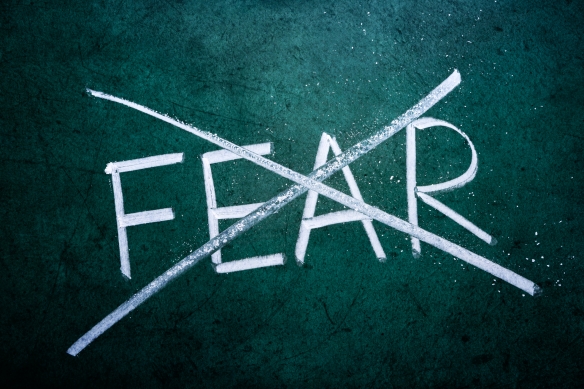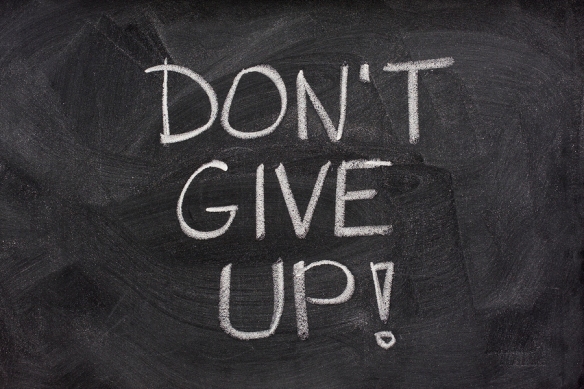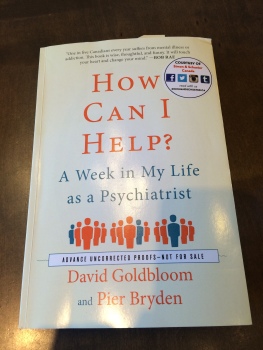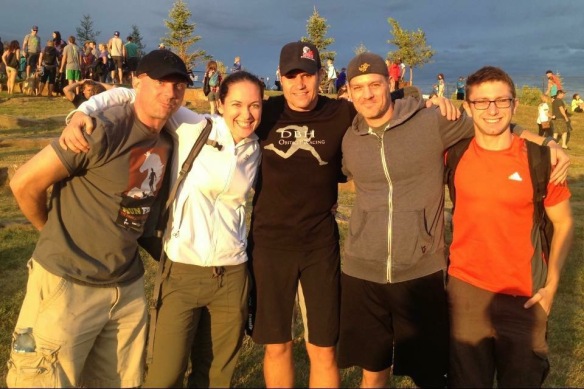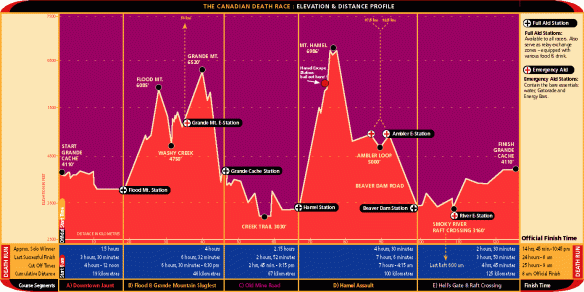Dispelling some of the common myths about mental toughness.
As a member of the XWC ambassador team, a clinical and sport performance psychologist, and a competitor in a number of gruelling obstacle course races and ultramarathons, I figured it would be appropriate for me to focus some of my blog entries on areas that I both know a fair bit about and think are relevant to the XWC, OCR, and broader fitness communities: mental health and mental performance. So for this first entry, I’m going to attempt to dispel some of the common myths about mental toughness – what it is and what it involves – since I encounter a lot of inaccurate information about this topic circulating around both traditional and social media.
Before I begin my discussion of myths related to mental toughness, it would be prudent for me to quickly define what “mental toughness” actually is. Mental toughness is generally considered to be synonymous with the concept of “psychological resilience”, which itself is defined as an individual’s ability to positively and properly adapt to stress and adversity. Because the two terms are more-or-less equivalent, for the remainder of this entry I will use them interchangeably.
Myth #1: Mentally tough people don’t experience fear/anxiety
Fear and anxiety are normal, healthy human emotions, and thus mentally tough people can and do experience them just like anyone else would. So the belief that mental toughness requires that a person have “no fear” is complete BS with absolutely no basis in reality. With that being said, however, there are differences in how mentally tough people manage their fear and anxiety – namely, they don’t let fear and anxiety interfere with them living their lives. In other words, they learn to take their fears and anxiety “along for the ride”. In fact, professional athletes and performers go far beyond knowing how to simply manage anxiety; they actually train themselves to use anxiety to their advantage in ways that lead to optimal performance. Professionals train themselves to harness their anxiety through hard work and dedication (that’s how they became professionals!) and you can too. This brings us to our next myth about mental toughness….
Myth #2: Mental toughness: You’re either born with it or you’re not.

While it’s true that some folks naturally have higher levels of resilience compared to others, it is completely untrue that resilience is an all-or-nothing trait that a person is either born with or not, like being born with blue eyes, for example. Life isn’t black and white and neither is the case of whether a person is mentally tough or not. Like many psychological characteristics, mental toughness is something that can be strengthened like a muscle, and cultivated through deliberate training and life experience. Trust me when I say it’s possible, I witness it almost every day! (Not to mention that if it weren’t possible, I’d be out of a job.) Many psychologists, like myself, help their clients cultivate resilience by capitalizing on the incredible adaptability and flexibility of the human brain – a characteristic referred to as “neuroplasticity”. Although the brain is most “plastic” or adaptable during the early stages in our lives, the brain retains the capacity to restructure itself across the lifespan.
“Okay, okay” you say, “but how does a person actually cultivate mental resilience?” The answer to that question is both simple and complicated. The answer is simple because doing so basically requires that a person develop concrete psychological and behavioural skills for managing their thoughts, emotions, and physiological state while experiencing distracting and aversive experiences (e.g., fear, anxiety, panic, worry, anger, sadness, depression, pain). A person’s capacity to “self-regulate” in this way is critical to his or her ability to perform successfully under pressure. Once a person has cultivated the necessary skills to perform successfully, then they usually do perform successfully. And once they begin performing successfully, then they begin to trust in themselves to continue performing successfully. This sense of trust in oneself that one will succeed in overcoming adversity given their current skills, abilities, and knowledge, is called “self-efficacy”, and unsurprisingly, it is one of the core features of mental toughness.
As indicated above, the answer to the question of how a person cultivates resilience is also complicated. This is because every individual is unique is terms of which skills they need to develop in order to perform successfully. Some self-regulation tools are, in my opinion, essential for all people to have (e.g., mindfulness training), whereas other tools are situation and person specific (e.g., visualization, positive imagery, performance breathing strategies, stress inoculation, restructuring unhelpful or maladaptive thought patterns). Many clients I see are already equipped with a well-developed suite of skills that work quite well for them, and thus they only need one or two new ones in order to move forward. Others might have fewer skills under their belt and benefit most from learning rudimentary skills upon which they can build more technical, complex, and individually tailored ones.
Whatever the case, the general answer of how you can cultivate resilience is the same: learn and practice any missing or underdeveloped self-regulation skills so that you can successfully approach and overcome the challenges in your life, rather than avoid them. What surprises a lot of people is the fact that having the confidence to approach challenges in life is not actually required for do so. Confidence will inevitably come afterwards, but doesn’t need to be there to succeed. The skills, however, do need to be there.
[It requires noting here that there are many cases where anxiety, for various reasons, can become excessive, overwhelming, and lead to dysfunction. The topic of anxiety disorders isn’t the focus of this blog entry, so I won’t discuss it further here, but the good news is that effective treatments for anxiety disorders are available. Those interested in getting resources for excessive anxiety (e.g., treatment options, self-help books, community support) should feel free to contact me.]
Myth #3: Mentally tough people never quit.
Persistence, grittiness, and the determination to persist under difficult circumstances are absolutely all facets of being a resilient, mentally tough individual. And it is very true that we are capable of doing far more than our brains often tell us is the case. The Navy Seals even have a “40 percent rule“, which captures the idea that when our brains tells us “you’re done” physically, we’re usually only about 40% done physically (however accurate, this rule came about from the observation that about 99% of marathoners finish the marathons they start, even though most have the thought that they’re done around mile 16).
So persistence is definitely a good thing and we should get in the habit of challenging some of those habitual, knee-jerk (brain-jerk?) messages to simply give up. With that being said, is there such a thing as too much persistence in some cases? Research suggests the answer is yes. Whether the scenario is related to diminished returns or a sunken investment (e.g., slot machines), a need for physical or mental recovery, the futility of trying to change a situation that’s not in your control, or scenarios where persistence actually makes the situation worse, there are many instances where it makes good sense to throw in the towel than it does to doggedly persist.
This is especially relevant in training and competing. Countless times, I’ve seen athletes (and I include myself in this) push too hard or move too fast in their training, perhaps by not allowing sufficient time for rest or recovery, or by pushing to the point where proper biomechanical form deteriorates. In these cases, such psychological inflexibility typically results in either a traumatic injury or gradual wear-and-tear, which in turn, often result in either arriving at the start line injured or not at all! (Ugh, the worst!) Should we consider these levels of determination to be examples of mental toughness? They are pretty maladaptive, so I would think not.
As suggested, not pulling the plug in training when it’s adaptive to do so is usually a sign of inexperience and/or psychological inflexibility; either the person doesn’t know where “the line” is, or they simply choose to ignore it. In either case, overstepping that line often gets athletes and non-athletes into a lot of trouble. The knowledge of where the line is often emerges through a combination of guidance from knowledgeable trainers/therapists, as well as through one’s experience with the unique physical and psychological symptoms that one experiences during training and competition.
One situation where it can be particularly difficult to not overstep the line in training is when one is faced with making the decision to DNS (i.e., “did not start”) when one is injured. This decision can be an especially difficult one when a person has, for example, spent a bunch of money on training, travel expense and a (usually non-refundable) race entry. It can also be difficult to back down when one has made a public declaration that they will compete, been fundraising for a cause as a part of their training, and/or has sponsorship that is contingent on regular competition (and victory). Unfortunately, while these pressures to continue may be greater under these circumstances, the rules don’t change: quitting is still the right thing to do, and if you don’t throw in the towel, you could be in even bigger trouble later.
As is the case with most topics I discuss, this is a complex one worthy of further exploration, but the takeaway point here is simply that we need to acknowledge, as competitors, that a line exists where pulling the plug is the right thing to do, that the line is a moving target that hinges on many factors. In brief, if you’re training for a competition, then you’d better watch for the line. And when you see it, you’d better respect it.
Myth #4: Mentally tough people focus exclusively on winning and outcomes.
Wins versus losses, successes versus failures…these outcomes have real world implications. So yes, outcomes matter. But if you want to maximize your performance, if you want to achieve that outcome, focusing on that future outcome during a performance instead of focusing on the moment, might just be the worst thing you can do. This doesn’t mean that mentally tough people don’t think optimistically, that they avoid thinking about the future, avoid setting goals, and don’t use images associated with reaching their goals as motivation during training and competition. What it does mean is that they don’t let distracting thoughts about the future (e.g., obsessing about how they are going to perform on a given day, or whether they are going to win or lose) rob them of their focus on the present moment, since this present moment awareness is required for optimal performance delivery.
High performance athletes work hard to maintain present moment awareness of what they are doing. They do this by learning to continuously “shuttle” their focus along two different dimensions. The first dimension is between internal (e.g., thoughts, physical sensations, proprioception) and external (e.g., wind, terrain, movement of other competitors) stimuli. They are constantly focusing inward and outward – assessing how their bodies are feeling, how they are positioned, and executing various movements in relation to conditions and objects in the environment. The second dimension is between a narrow (e.g., a quarterback targeting the chest of a receiver in motion) and wide (e.g., a quarterback reading the defense) breadth of focus. They are continuously enhancing their situational awareness by constantly moving between the big picture (the forest) and relevant details embedded in the big picture (the antennae of the beetle crawling over the bark of the trunk of the tree in the forest). Obviously, athletes can’t shuttle and maintain fluid, present-moment focus along these two dimensions when they’re distracted by thoughts about whether they’re going to complete the pass, score the goal, win the game, or finish the race.
This is yet another topic of further discussion, but the point to remember is this: If you train yourself to focus on the present moment in training and competition – on the process of performing – then the best possible outcome will take care of itself.
Myth #5: Mentally tough people rigidly concern themselves with performing perfectly.
This myth is partially true and partially false, so allow me to explain. When it comes to both life and sport, perfectionism is a finicky thing. It can giveth or taketh away. The following summary of the psychological research on this topic is painfully oversimplified, but, in general, we know there are two types of perfectionism, one helpful and the other harmful. In brief, whether your perfectionism is helping or hindering depends to a certain extent on how you conceptualize “perfection”.
The first view of perfectionism, the unhelpful one, is called “perfectionistic concern”. This view involves the rigid belief that perfection is an all-or-nothing concept. One’s efforts either result in a perfect outcome (the outcome you want; e.g., winning the game, finishing in first place, landing a perfect score) or they do not…and if they do not, all is lost. The general motto of this perspective is “failure is bad” and thus both mistakes and failure are feared, avoided like the plague, and obsessed about after they occur. This process of dwelling on mistakes and self-criticism usually results in ongoing rumination in the unpleasant emotions (e.g., sadness, anger, helplessness, hopelessness) that are often part and parcel of the whole failure experience. This view also involves frequent “self-versus-others” comparisons, where one measures their progress or performance in light of how others are doing (e.g., “Am I stronger/faster/more skilled than other competitors?”). Unsurprisingly, holding this view of perfection is associated with distraction in competition, “choking” under pressure, as well as higher rates of pathology and illness. It also frequently leads to exhaustion. How could one ever achieve perfection when perfection itself is an unattainable outcome?!
The second type of perfectionism is called “perfectionistic striving”. This view of perfectionism involves the belief that perfection is a fluid, ongoing, and never-ending process of self-improvement. There is a belief that one can never be truly perfect; we can only move ever closer to our own vision of perfection without ever attaining it. In this sense, the very act of striving towards perfection (by learning from both success and failure) is perfection itself. In other words, perfection is the process not the outcome. The motto of this perspective is “failure is a part of success” or even “failure is a part of perfection”. This, of course, leads to a paradox that is perfectly consistent with nature – namely, that we are always perfect as long we are walking the path towards perfection. Walking the path simply involves learning from both successes and failures since they hold equal teaching value.(In fact, failure may even hold greater teaching value.) In practice, this mean always trying, always learning, and in doing so risking possible failure.
The following Michael Jordan quote nicely summarizes this view of perfectionistic striving:
“I’ve missed more than 9000 shots in my career. I’ve lost almost 300 games. 26 times, I’ve been trusted to take the game winning shot and missed. I’ve failed over and over and over again in my life. And that is why I succeed.”
Perfectionistic “strivers” acknowledge their feelings of sadness and disappointment after a failure, but don’t dwell them. They do this by allowing themselves appropriate time to grieve the loss, and then move on by being strictly analytical about their performance. In other words, they gather whatever information they need to move on, they store and apply that information, and then shift their focus to whatever task is next. Moreover, in contrast to the self-versus-other focus associated with perfectionistic concerns, the striver’s view involves a “self-oriented” perspective that involves focusing on one’s own process (e.g., “Am I better, stronger, more self-compassionate than I was yesterday?”), rather than to those of others. As one might correctly guess, a perfectionistic striving view is positively correlated with high levels of focus and performance under pressure, self-compassion, as well as better physical health and well-being.
Myth #6: Adversity in life is bad for developing mental toughness.
When we are in the thick of a crisis or highly stressful situation, it is often difficult to acknowledge that couched in these situations are opportunities for positive growth. Even when dealing with dilemmas – situations in which there are truly no “good” outcomes – there are still, at the very least, opportunities for cultivating greater levels of resilience. Drawing on existing psychological research, we know that extreme levels of adversity over long periods of time can significantly negatively impact a person’s functioning and health. But we also know that moderate amounts of adversity (an amount of adversity that is neither comfortable nor overwhelming for a person) serve an adaptive function in the long run, by stimulating both acquisition and cultivation of coping strategies, and thus resistance to future stressors. The process of enhancing one’s capacity to manage stress through repeated exposures to moderate amounts of adversity in analogous to the process of inoculating against disease by exposing our immune systems to small amounts of the disease (in fact, the structured process of doing this in therapy is actually called “stress inoculation training”). Thus, moderate amounts of adversity are good for developing mental toughness.
But how does this relate back to everyday life, training, and competing? Simply put, if you want to be more resilient or mentally tough in any of these areas, then you need to take moderate risks in order to do that. Again, don’t worry about lacking confidence, just focus on getting the skills from those who can help train you. The other good news is there’s a carryover effect with resilience; if you take risks in one area of your life, the resilience you develop in one area (e.g., physical fitness) will often carry over to others (e.g., social confidence). It is through these instances of dealing with adversity that we not only learn new ways of being, but also enhance mental flexibility, which is a characteristic that can drive a person forward in life, through pain, discomfort, anxiety, when it is adaptive to do so, or redirect them to more adaptive behaviour when persistence would be harmful (see myth #3). So embrace adversity, seek it out in moderation. Without it, we wouldn’t learn, nor would we wouldn’t grow stronger.

In closing, mental toughness involves a combination of flexibility and determination. It involves the ability to look directly at the fragility of life, the fleeting nature of our existence, and embrace the resulting anxiety and uncertainty. It involves making mindful and conscious decisions about how we want to spend our lives despite these feelings, and then dedicate ourselves to taking those steps, to walking that path. The universe is chaotic, our world unpredictable, and our lives fragile. We know this. We feel it in our bones. And without that fear – that beautiful innate drive to overcome the odds, to run the gauntlet that the universe throws at our feet – well, we wouldn’t rise to the occasion.
Caelin


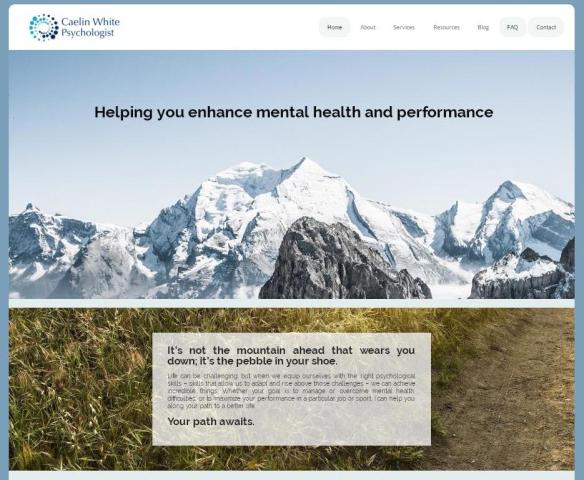 Blog entries related to mental health and performance will be posted on my other site, whereas blog entries, which have tapered off significantly this year as you might have already noticed, will be posted here.
Blog entries related to mental health and performance will be posted on my other site, whereas blog entries, which have tapered off significantly this year as you might have already noticed, will be posted here.